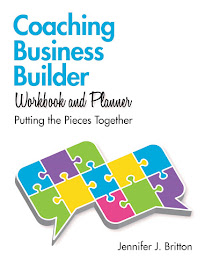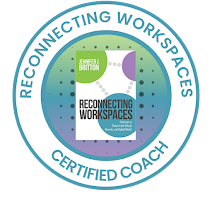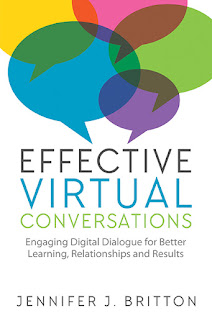This week's blog is written by Evana Valle, our Team Lead for Group Coaching. Evana has
been leading many of our Group Coaching Essentials cohorts this year, after shadowing with me, being an alumni and an amazing group coach herself.
One of the things that gets pronounced in a group is the different ways people connect in with the coaching process. While there's still debate about the "validity of different learning styles" in the academic world, as a practitioner I see this play out every day in conversations - in person and virtually.
Here's our 11th in the 18 series:
This week focuses on the value and benefit of intentionally considering and including various learning styles in your group programs. For example, approximately 60% of adults in North America have a preference for visual learning. Surprised? Likely not; however, what about the remaining forty percent?
In group programs, various learning styles are likely to be present, and you want to be mindful of who’s in your room (virtual or in-person) and how you can keep everyone learning, engaged, and moving towards their goals in a meaningful way. Here’s a table to help you:
|
Learning Style |
Preferences |
Possible questions by learning style? |
|
Visual- learn by seeing. |
Video over phone call Appreciate PowerPoint presentations and visual images |
1.What does that look like? 2. What impact do you envision? |
|
Auditory- learn by hearing. |
Prefer conference calls and enjoy supplementary programs through Ted Talks, audios, Podcasts and peer dialogue |
1. What does it sound like? |
|
Kinesthetic – learn by engaging with the world. |
Love to try things out. Can be challenged in virtual reality IF no hands-on, active exercises are included |
1.What does it feel like? 2. What would you do? |
*Source: Effective Virtual Conversations by Jennifer Britton
Consider how you can integrate learning styles throughout the various elements of your overall program, including marketing and sales (to maximize interest and buyers), session design, in-between session interaction, and fieldwork.
Principle – Consider the four core learning styles (visual, auditory, reading and writing, and kinesthetic).
Action: Create your programs to include all or a combination throughout each session to support maximum learning and embodiment.
This week, consider reviewing various aspects of your program (design, marketing, sales copy) to ensure the different learning styles are included.
Consider the following ideas/ questions:
* How do you ensure all learning styles are incorporated into your programs and marketing?
* How can you leverage technology to support your participants to lean into their natural learning style?
*What further learning/development would benefit you as a coach to support you in identifying your participant’s preferred learning style?
*How can you integrate the learning styles in pre-work?
*How can you diversify your marketing and sales copy to include the various learning styles?
*How might you use learning styles to deepen participant awareness? Forward their Actions? Goal-setting? And accountability?
Enjoy the conversation and exploration,
Evana
What is your unique style as a coach? Take 2-minutes to complete the NEW Group and Team Coaching Superpower Quiz. You can find it at https://bit.ly/gtcoachingsuperpower. Share your style using the comments below and/or follow along on Instagram at our CoachingBizBuilder site.
Join us for an upcoming program including:
Group Coaching Essentials - Tuesdays 830 - 945 am ET starting Tuesday September 27 - running for 5 weeks to end of October (8.75 CCEs). Best practices for design, marketing and implementing group coaching.
Virtual Facilitation Essentials - One Day Offering - Wednesday October 5 - 830 - 430 pm ET (8.5 CCEs). Come build your confidence and skills with Virtual Facilitation (yes, there still is more to learn about zoom, Teams and the virtual world!)
Coaching the 5 (Hybrid) Work Styles (based on our Hybrid Work Styes Quiz) - Tuesdays 1230- 230 pm ET - September 27 - end of October (currently being reviewed for 14 CCEs). Geared for coaches who are looking for a quick, (and free!), framework to use with teams as a conversation sparker around different styles, approaches and teamwork.










